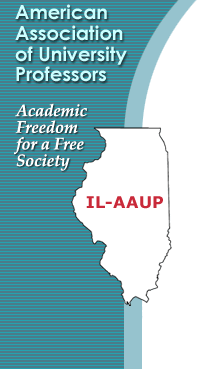 |
|
Book Review: Illinois Politics: A Citizen’s Guide
Reviewed by Ken Andersen
Illinois Politics: A Citizen’s Guide by James D. Nowlan, Samuel K. Gove, and Richard J. Winkel, Jr. (University of Illinois Press, 2010), is much more than an update of the classic 1996 predecessor, Illinois Politics and Government, by Gove and Nowlan. Every person with an interest in the future of Illinois needs to read and keep handy on the bookshelf for use as needed to understand Illinois politics.
The thrust of the book is captured in the first sentences of the opening paragraph: “Since its earliest days, Illinois has been captive to a political culture that treats government as just another marketplace in which to do business. In turn, this marketplace has provided a fertile setting for corruption, which has flourished.” The paragraph concludes on the hopeful note “assertive good government groups and more ethical behavior may be forthcoming,” in part due to US attorney Fitzgerald.(1) The climate for corruption is linked to Daniel Elazar’s characterization of the individualist strain in politics, i.e. seeing the “democratic order as just another marketplace.”(2)
The material in the book is so rich in data and insights that it is temping to quote large sections of every chapter. A listing of chapter titles suggests the fullness of coverage:
1. Illinois in Perspective
2. Power, Parties, Groups and the Media
3. Elections (By Kent D. Redfield)
4. Constitutions
5. The Legislature
6. The Executive
7. The Courts
8. The Intergovernmental Web
9. Education
10. Taxing and Spending
11. Illinois: Strong but Not Achieving
Chapter 1, “Illinois in Perspective” was of great value to me as I never had a course in Illinois history. It traces the founding of the state dominated by river towns in Southern Illinois, growth of the railroads and the gradual shift to the dominant role of Chicago. It concludes with a section, “Corruption: A Tradition in Illinois” bringing us up to date with Blagojevich.
The first chapter notes that regional differences on varied issues are largely those of self-interest. This theme in picked up by Redfield in Chapter 3 tracing regional, partisan and racial fault lines and how the “pragmatic, individualistic, often corrupt political culture” shapes Illinois politics.(43) The chapter includes multiple tables ranging from voting results to comparing political contributions by specific groups. The tables alone provide rich insights.
Chapter 7 focuses on the reality that Illinois has more governmental units than any other state in the union. (My thought: consolidation could be a great way to save money and increase efficiency.)
In 2005 it had 102 counties; 1,433 townships; 77 road districts; 1,292 cites and towns; 377 elementary school districts; 297 unit school districts; 101 high school districts; 39 community college districts; 2, 220 special distracts such as fire protection, parks, water authorities, mass transit for a total of 6,039.
The causes for and decline in higher education funding are graphically displayed as well as extensive coverage of elementary and secondary education issues in Chapter 9.
The final chapter places Illinois squarely in the middle on many measures just as our taxes are shown to be moderate in the previous chapter. In 2008 Illinois was named “the most average state in the nation” by the Associated Press.(231) This is noted in the chapter’s concluding section titled, “A State Mired in the Middle.”
As the authors make clear, much of that is tied to its climate of corruption and actions and responses of its citizens. (My thought: the need for the state to invest in human capital through its higher education system has never been more obvious if we are to escape “being a state mired in the middle.”)
Have no doubt; this is a book by scholars who have made the study of Illinois politics a lifetime pursuit. All three authors are associated with the Institute of Government and Public Affairs at the University of Illinois. The book has 23 pages of footnotes, is helpfully indexed, and richly supplied with relevant cartoons. It is not dull reading.
For those with any exposure to Illinois politics, name recognition of the players will abound. It is a great read, learned, fun and disturbing in many respects as one contemplates the future of Illinois.
|
|


